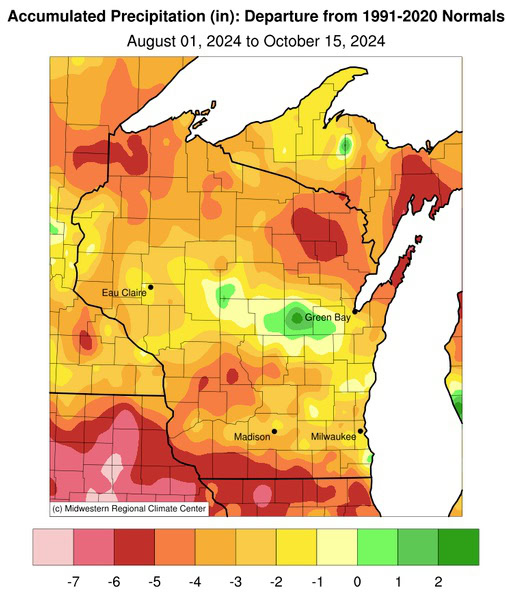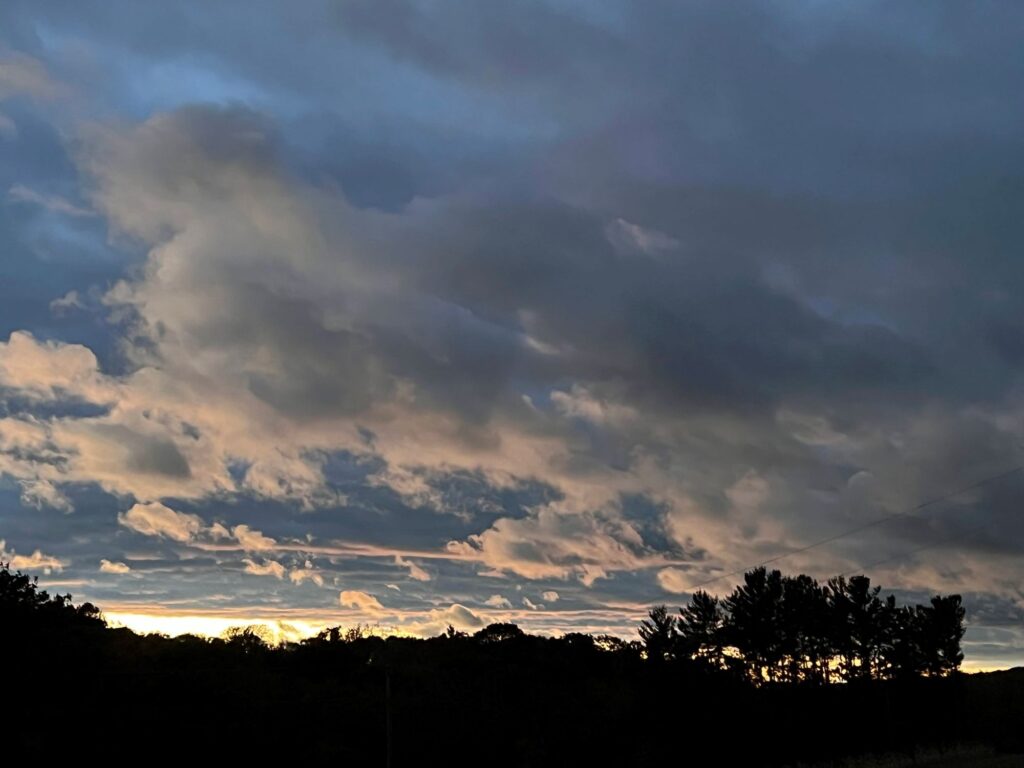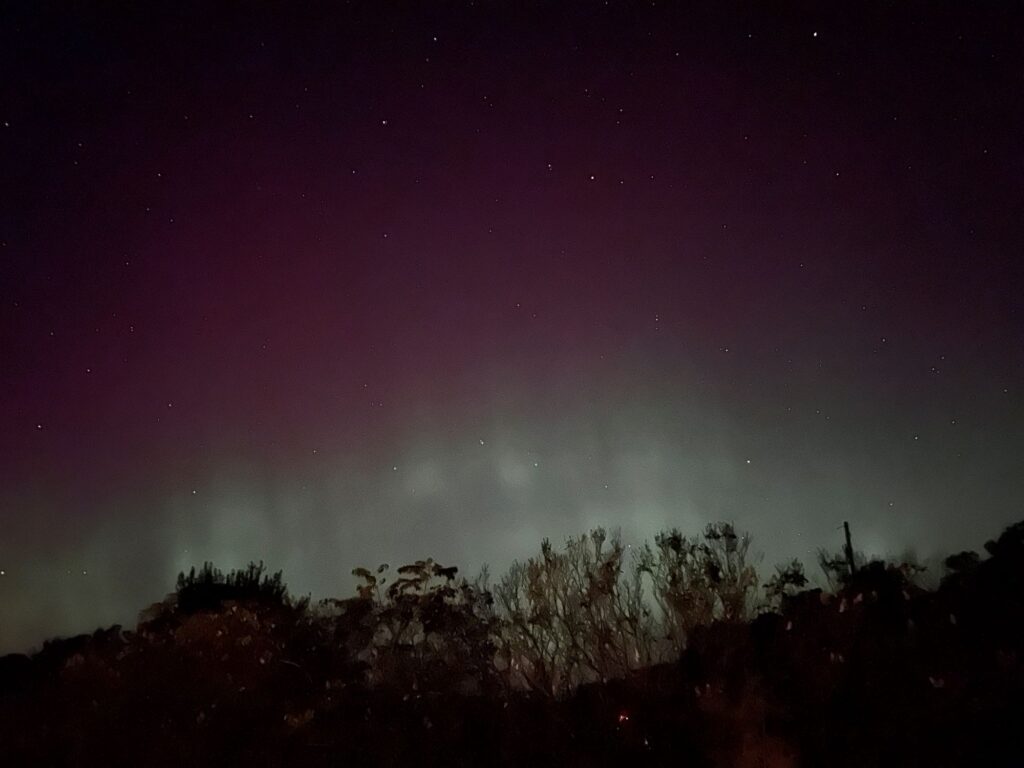Back Home by Chris Hardie
As we march through the end of October, the harvest season is earlier and going full throttle in farm country, thanks mainly to a long stretch of dry weather.

It’s a busy time of year, with tractors, combines, grain trucks and gravity boxes criss-crossing the roads and fields. As of Oct. 15, farmers in Wisconsin had 26% of the corn grain crop harvested, 10 days ahead of last year and nine days ahead of the five-year average. Soybean harvest was 83% complete, 23 days ahead of last year and three weeks ahead of average.
Farmers are taking full benefit of the dry weather which has put the entire state of Wisconsin in abnormally dry to severe drought. Northeast Wisconsin has the largest area of severe drought, covering almost nine counties.
The National Weather Service in La Crosse says there have been precipitation deficits of 1 to 8 inches in my part of the state, with the greatest deficits of 4 to 8 inches south of Interstate 90. That has resulted in the dry and drought conditions for Wisconsin, Minnesota and Iowa.

There’s a silver lining in every cloud – even when we don’t get rain. If you could pick a time of year to have a drought, fall might be best. The dry weather has been excellent for drying down corn in the fields. Most farmers in the Upper Midwest are harvesting corn when it comes close to 25% moisture. The statewide average for corn moisture was 21% on Oct. 15.
When we have a wet fall with cool temperatures, farmers sometimes have to spend additional dollars drying down the corn for long-term storage. Any money farmers can save now is needed, as corn prices have been in a two-year decline, hovering in the $4 per bushel range – down 45% from 2022.
That’s the same year that soybean prices peaked – due to world instability because of the Russian invasion of Ukraine. Soybeans peaked at $17.69 per bushel in 2022 and have since fallen 39% to under $10 per bushel.
Commodity prices – unless you grow coffee or cocoa (sorry Wisconsin) – are generally down across the board, with the exception of milk prices. Milk prices are up more than 40% since the beginning of the year and are hovering in the $23 per hundredweight range. Overall, milk production has declined. The prices are good news for dairy farmers and not so good news for holiday bakers, as butter prices are increasing.
In the smaller world of gardening, the dry weather has added some additional challenges to fall tasks. My wife Sherry and I recently transplanted some garden plants and my surgically replaced hips felt it when I had to stomp down on the shovel to break up the hard ground.

Our lack of rain also had me dragging hoses and moving the sprinkler around to provide some moisture for the tubers and other garden perennials entering the winter season.
Speaking of winter, there may or may not be relief from the drought. The National Weather Service’s forecast for the months of December through February gives the Upper Mississippi River Valley a 33% to 40% chance of a wetter-than-normal winter, which may or may not mean more snow. There are also equal chances for warmer, normal or colder than normal temperatures.
With all due respect to our meteorological friends, that sounds like a political forecast in a political season and pretty much tells me that the winter will be what the winter will be. Which actually makes perfect sense, given the weather extremes we had this year.

The Aurora Borealis has been more visible lately because we are nearing the peak of the 11-year solar cycle with more solar flares and eruptions.
And speaking of atmospheric conditions, we’ve sure been treated to some spectacular nighttime shows this year with the frequent Northern Lights shows.
The Aurora Borealis has been more visible lately because we are nearing the peak of the 11-year solar cycle with more solar flares and eruptions. Solar winds carry electrically charged ions towards earth and the ions collide with atmospheric gasses around our magnetic poles to create the aurora.
I just wish I didn’t have to stay up so late to see them.
Chris Hardie spent more than 30 years as a reporter, editor



